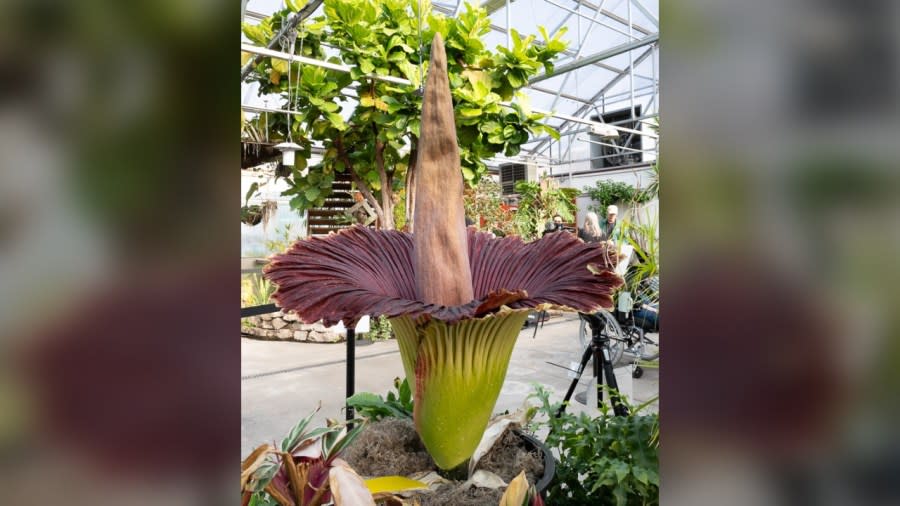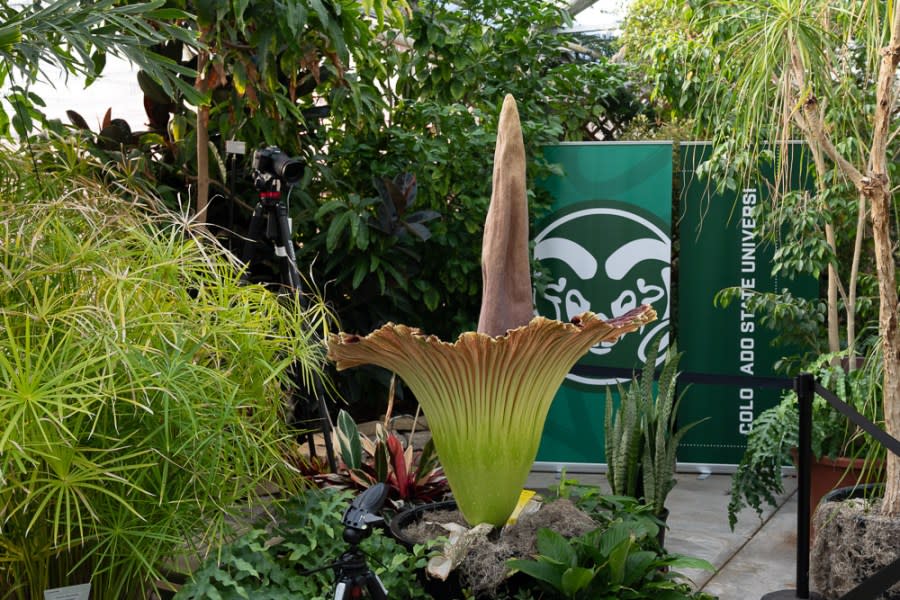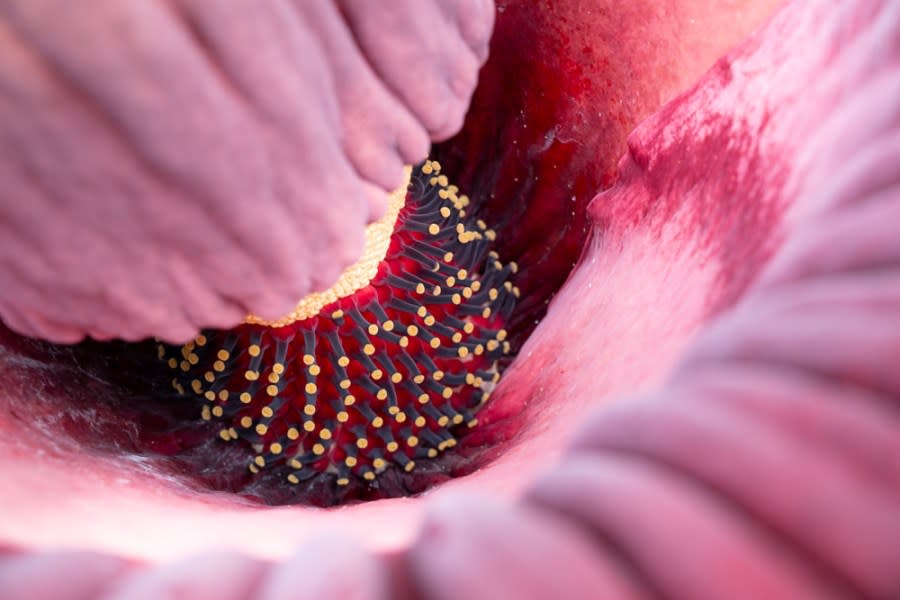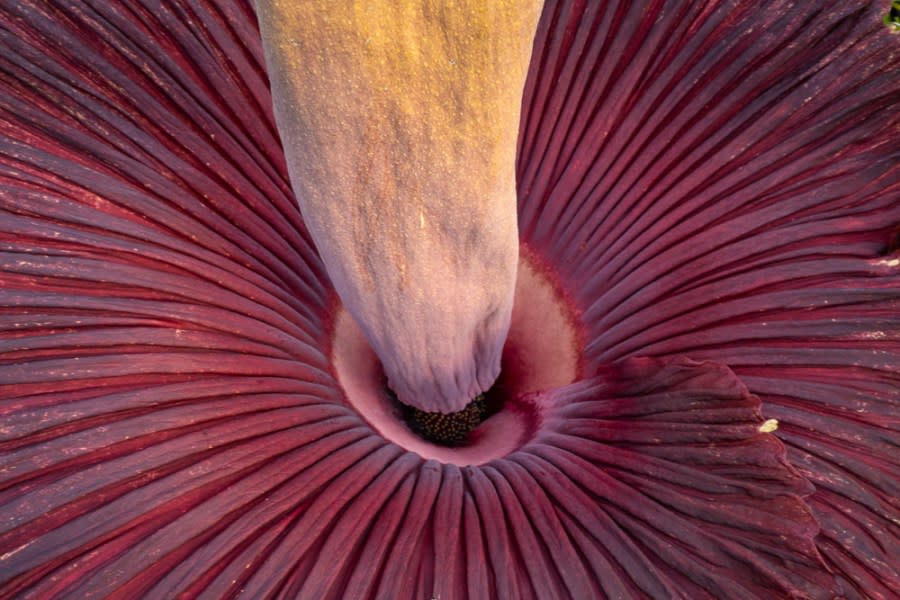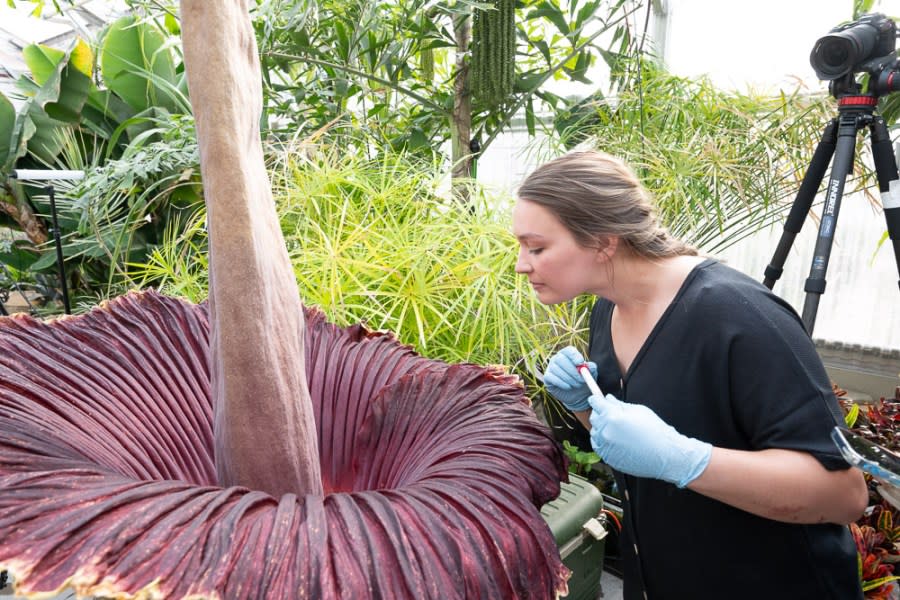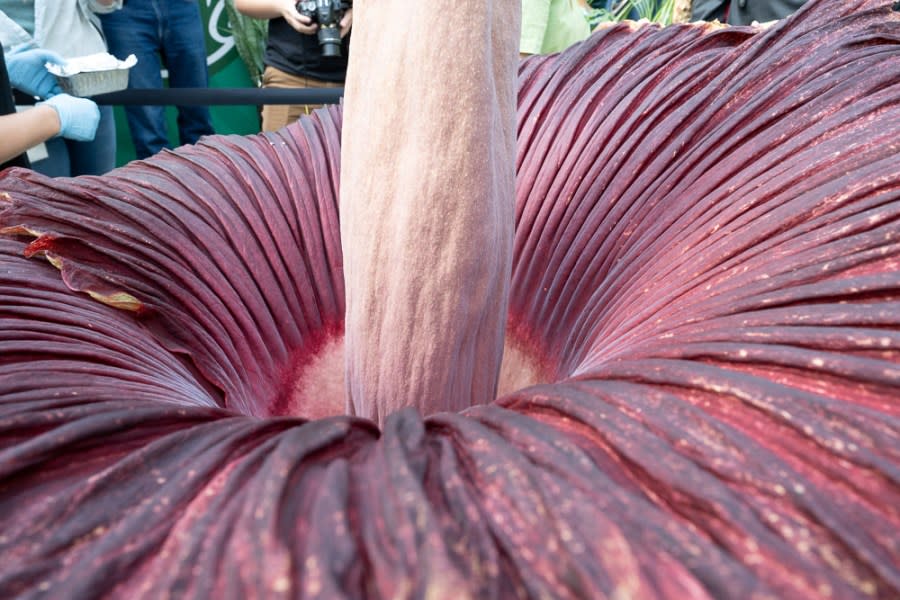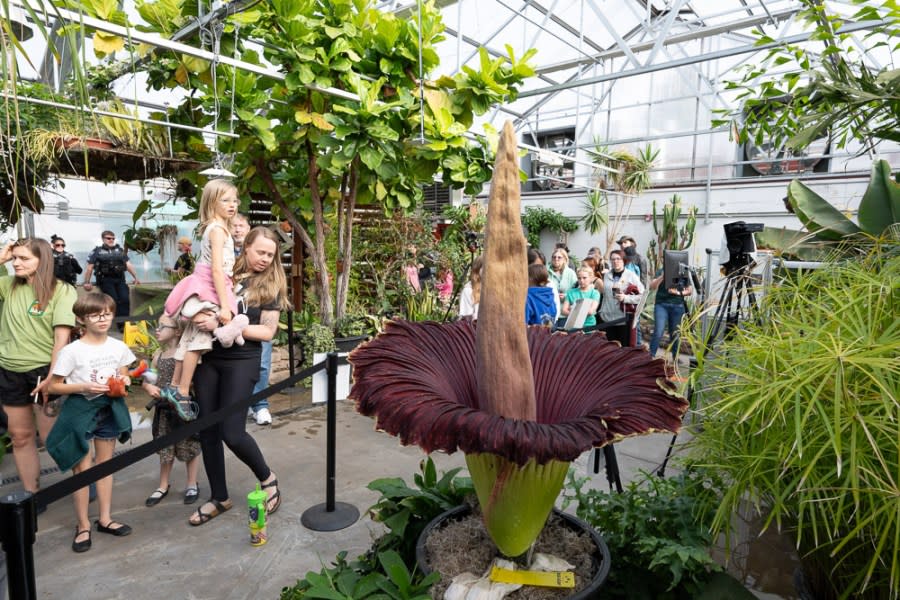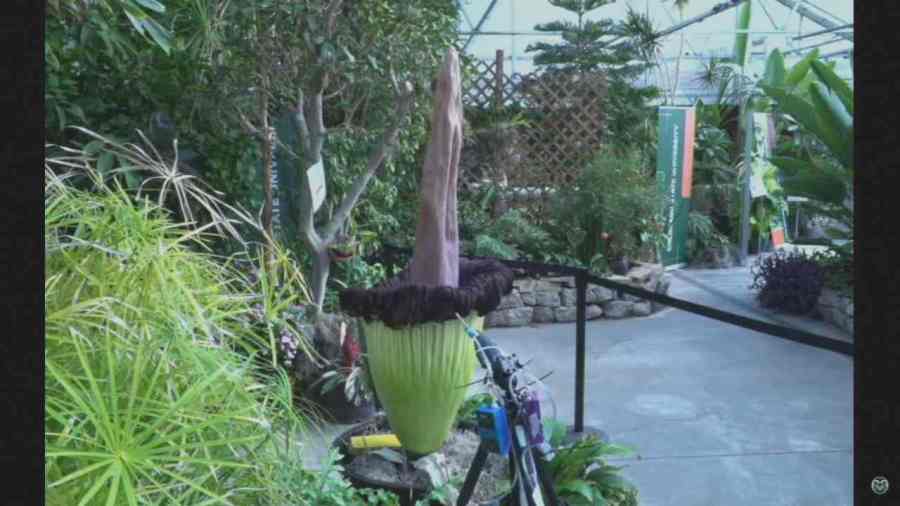Photos: Corpse flower blooms at Colorado State University

DENVER (KDVR) — Dozens of people lined up at the Plant Growth Facility Conservatory at Colorado State University in Fort Collins on Sunday to see and smell a rare flower.
The corpse flower blooms once every three to five years, and once it does, it emits an odor that has been compared to that of decaying flesh, hence the name.
These trees in Denver parks are ‘famous’ celebri-trees
CSU’s corpse flower, Cosmo, finally bloomed for the first time early Sunday morning, emitting an odor that has been described with words like putrid and pungent. Researchers at CSU have been waiting for this day for seven years.
The community was excited to get a whiff of it too, with dozens lining up along the sidewalk to see the flower on Sunday.
Saturday afternoon, CSU told FOX31 that the flower had “noticeable changes in the last hour.” Use the slider below to compare images of the flower from 5:22 p.m. and 6:22 p.m. Saturday
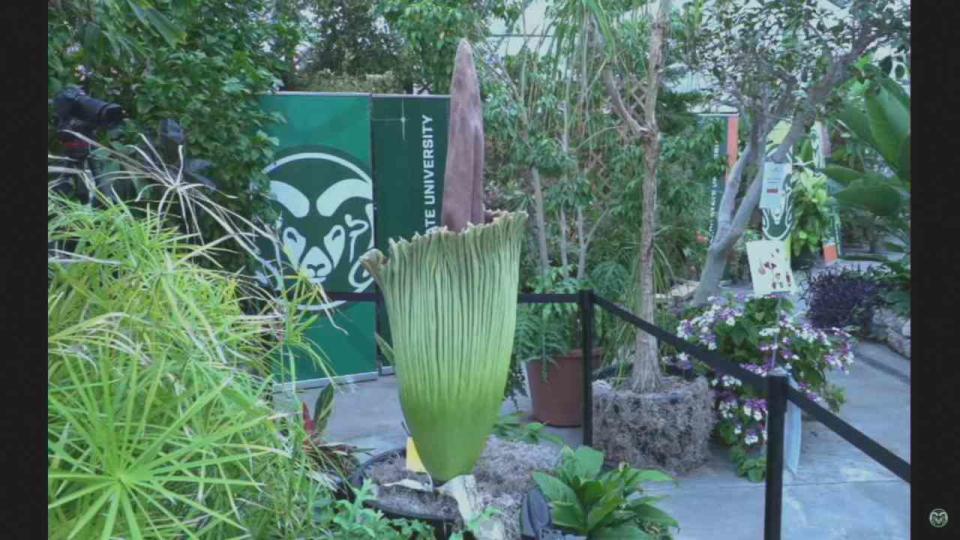
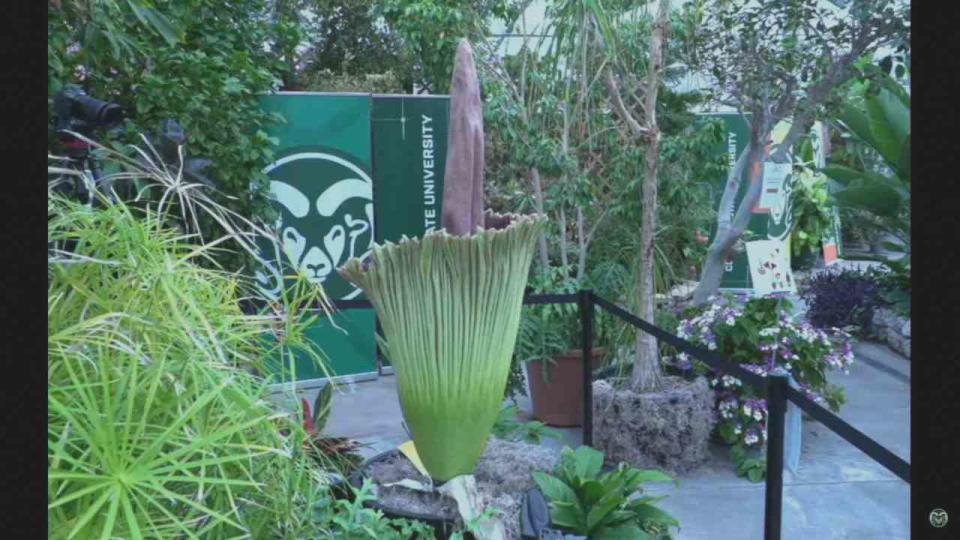
When do wildflowers bloom in Colorado?
At that point, CSU said it would likely bloom early Sunday, and it did.
Colorado State University’s Corpse Flower named Cosmo bloomed for the first time early on May 26, emitting an odor that has been described with words like putrid and pungent and compared to that of decaying flesh. (John Eisele, Colorado State University photography) Colorado State University’s Corpse Flower named Cosmo bloomed for the first time early on May 26, emitting an odor that has been described with words like putrid and pungent and compared to that of decaying flesh. (John Eisele, Colorado State University photography) Colorado State University’s Corpse Flower named Cosmo bloomed for the first time early on May 26, emitting an odor that has been described with words like putrid and pungent and compared to that of decaying flesh. (John Eisele, Colorado State University photography) Colorado State University’s Corpse Flower named Cosmo bloomed for the first time early on May 26, emitting an odor that has been described with words like putrid and pungent and compared to that of decaying flesh. (John Eisele, Colorado State University photography) Colorado State University’s Corpse Flower named Cosmo bloomed for the first time early on May 26, emitting an odor that has been described with words like putrid and pungent and compared to that of decaying flesh. (John Eisele, Colorado State University photography) Colorado State University’s Corpse Flower named Cosmo bloomed for the first time early on May 26, emitting an odor that has been described with words like putrid and pungent and compared to that of decaying flesh. (John Eisele, Colorado State University photography) Colorado State University’s Corpse Flower named Cosmo bloomed for the first time early on May 26, emitting an odor that has been described with words like putrid and pungent and compared to that of decaying flesh. (John Eisele, Colorado State University photography) Colorado State University’s Corpse Flower named Cosmo bloomed for the first time early on May 26, emitting an odor that has been described with words like putrid and pungent and compared to that of decaying flesh. (John Eisele, Colorado State University photography) Colorado State University’s Corpse Flower named Cosmo bloomed for the first time early on May 26, emitting an odor that has been described with words like putrid and pungent and compared to that of decaying flesh. (John Eisele, Colorado State University photography) Colorado State University’s Corpse Flower named Cosmo bloomed for the first time early on May 26, emitting an odor that has been described with words like putrid and pungent and compared to that of decaying flesh. (John Eisele, Colorado State University photography) Colorado State University’s Corpse Flower named Cosmo bloomed for the first time early on May 26, emitting an odor that has been described with words like putrid and pungent and compared to that of decaying flesh. (John Eisele, Colorado State University photography)
Amache rose blooms in Denver 80 years after being planted by Granada inmates
How to see and sniff the corpse flower
The public can see the flower at the Plant Growth Facility Conservatory at 1241 Libbie Coy Way in Fort Collins from 9 a.m. to 3 p.m. while the flower is in bloom.
The smell will become less pronounced after the first 12-24 hours, and the bloom only lasts around two to three days, according to CSU.
If you want to see the flower bloom but don’t care to smell decaying flesh, CSU has an ongoing live stream of the flower on YouTube that you can tune into.
What is a corpse flower and why does it smell like that?
According to CSU, the corpse flower is known as Amorphophallus titanium, and it is the largest unbranched inflorescence (or collection of flowers acting as one) in the plant kingdom. These plants can grow up to eight feet.
Even though the corpse flower’s stench is not ideal for humans, the putrid smell actually lures pollinators like carrion beetles and flies.
If it smells like fish in Denver, it might be from this blossoming tree
According to the U.S. Botanic Garden, the corpse flower is native to Sumatra, Indonesia and an estimate of fewer than 1,000 species are left in the wild.
Institutions like CSU began cultivating corpse flowers to preserve their genetics and learn more about how they thrive.
Usually, the plant goes dormant in the fall when students return to campus, so Brenner said they hide Cosmo.
“It looks a little sad, so we usually hide it in the back, so no one thinks we’re killing it,” Brenner said.
However, this year Brenner expects people from around the community to visit Fort Collins to get a glimpse and sniff at Cosmo while he’s in full bloom.
Copyright 2024 Nexstar Media, Inc. All rights reserved. This material may not be published, broadcast, rewritten, or redistributed.
For the latest news, weather, sports, and streaming video, head to FOX31 Denver.

